Course reserves help guarantee that all students in a class will have access to material assigned by an instructor. Hard copy items like books, videos, and physical objects are available to students at the Public Services Desk during regular library hours. Journal articles, book chapters, study guides, past exams, and other materials that can be scanned or are currently available in electronic form will be available 24 hours a day, 7 days a week.
Whether you are using hard copy or electronic reserves, the library automatically manages all copyright issues. Additionally, library staff can digitize material not available in electronic form (subject to copyright laws and guidelines).
Click Here to Make a Course Reserves Request
Print and Media Reserves at the Library
Submit your material along with an online Course Reserves Request Form to the Public Services Desk of the library. Instructors can specify a variety of loan periods: 2-hour, 4-hour for media items, or 3-day use. Students will need their NMU ID to check out materials.
Electronic Reserves
Instructors must use NMU EduCat in order to use electronic reserves. Follow the directions below to add electronic reserves as an External Tool to your EduCat course and begin placing requests for the current semester. Students will be able to access electronic reserves from the External Tool in EduCat.
If you would like to request digitization of materials that are not available in electronic form, submit a Course Reserves Request.
How to Create and add Materials to a Reading List in EduCat
Steps:
- Login to EduCat.
- Select the course you would like to add a reading list to.

- Enable Edit Mode by clicking the toggle in the top right of the screen.

Steps:
- Scroll down to the section of interest and click "Add an Activity or Resource."
- You are able to generate one reading list per course, however within that reading list you may create different sections (instructions to follow). We recommend adding a reading list as a general course resource.
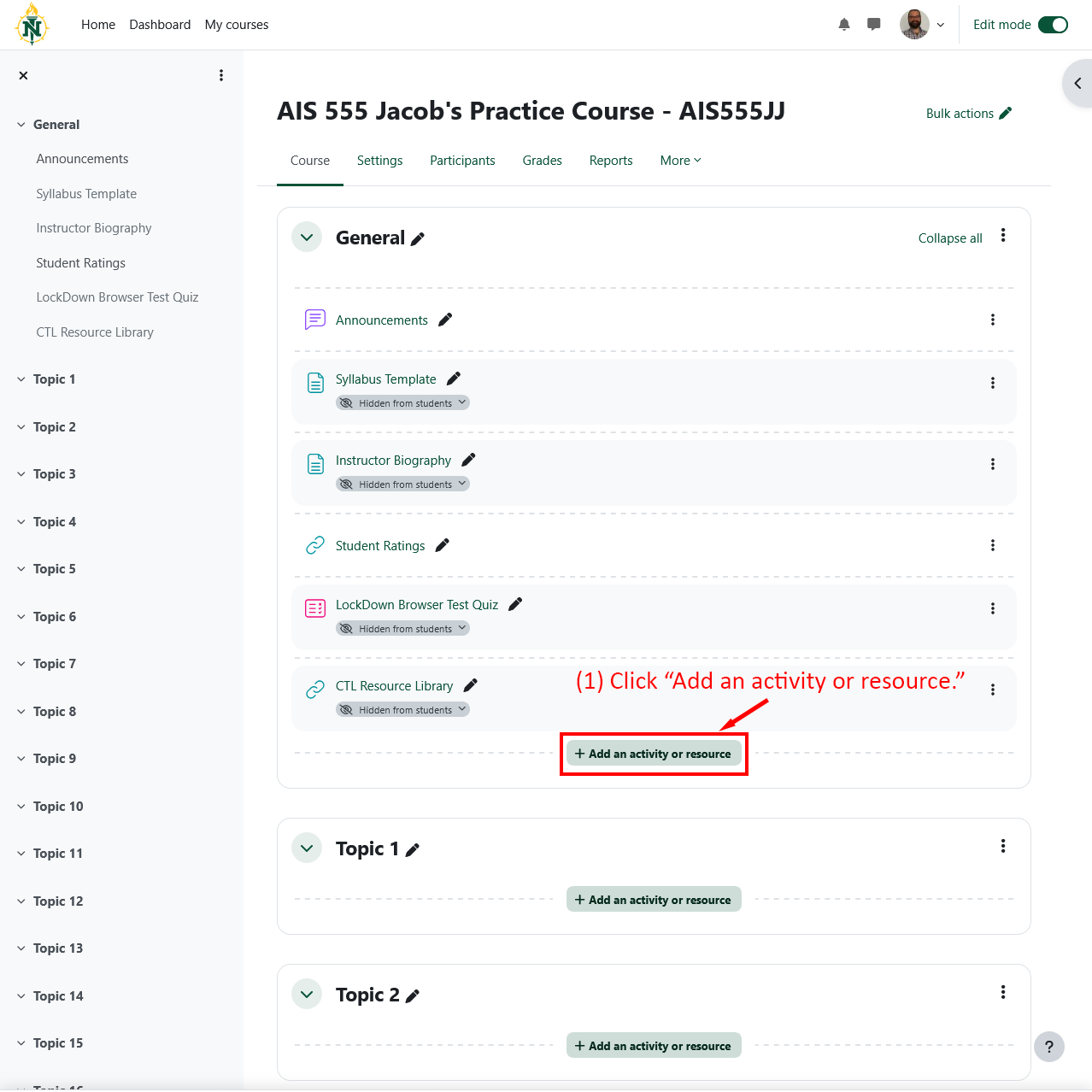
Steps:
- Type an activity name, e.g. "AIS 555 Reading List."
- We recommend naming your reading list the same as the course, e.g. if the course is titled, "AIS 555," name the reading list, "AIS 555 Reading List." This names the reading list in the context of EduCat.
- Click "Save and return to course."
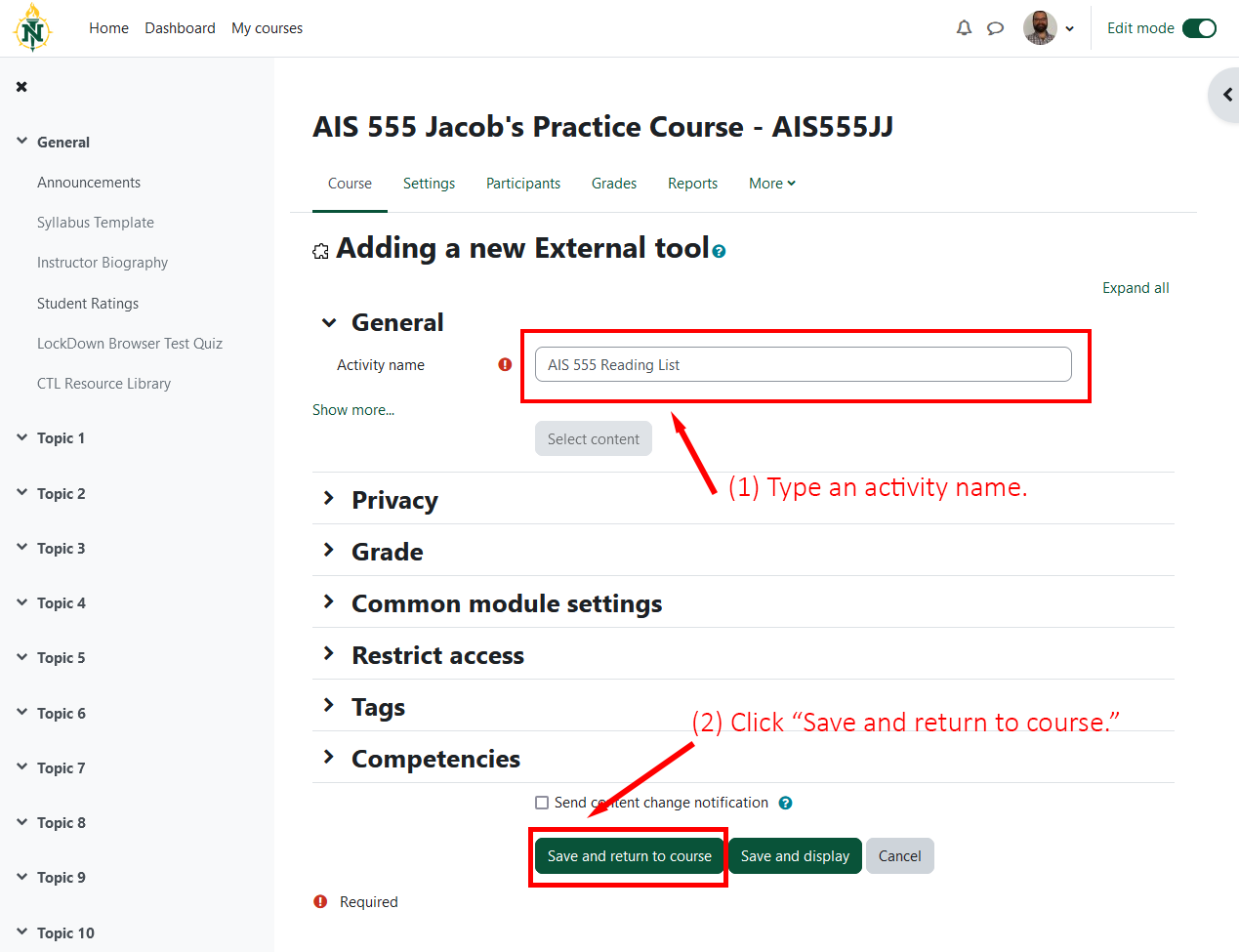
Steps:
- Click the reading list link that you just added and saved to your course.
- Clicking the reading list link will open a new window and bring you to the Lydia Olson Library's integrated library software called Leganto.

- Create a new reading list or roll over a previous semester's reading list.
- If you want to create a new reading list, click on "Create new list."
- If you have a reading list from a previous semester, click on "Select existing list."

Steps:
You can only create a single reading list for your course, however you may add multiple sections to that reading list. Each section can have its own title and rules for visibility, the steps for adding new sections to a reading list are described in the next accordion section.
If this is the first time setting up your course and reading list, you may need to confirm the course details.
- Add a title for your reading list.
- We recommend naming your reading list the same as the course. This facilitates ease of service by our library staff when updating or linking new materials to your reading list. While this seems repetitive to step 4, in this step, you are now titling the reading list in the context of the Lydia Olson Library's integrated library system, while in step 4 you named the reading list in the context of EduCat.
- Leave the default date values.
- Enter the number of students enrolled in your course.
- Select your department.
- Click "Confirm." This will open a from to continue configuring your new reading list.
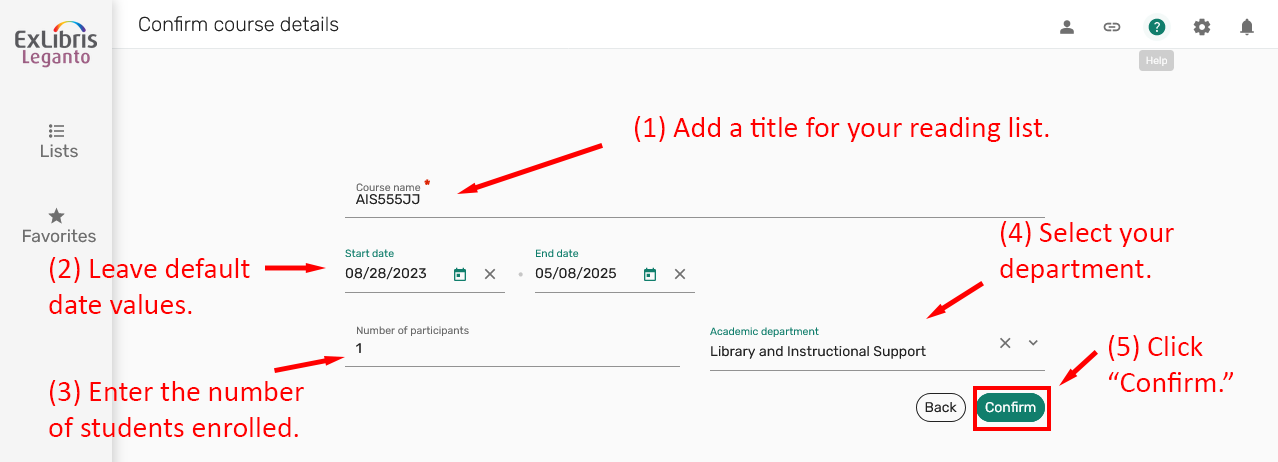
- Add a description to you reading list, leave the other fields as their default values.
- Click "Next."

- Select your section organization schema.
- We recommend selecting the default structure which allows you to create your own sections as you please. For more information about using the "Weeks," option, please contact the Center for Teaching and Learning.
- Click "Create list."

Once the new reading list is created, it is a great time to make a course reserves request for course required materials. By going through this process the library handles copyright concerns, and provides digital resources directly on your Resources section of your new reading list which you can add to student-viewable sections of a reading list. Instructions for adding materials to your reading list are covered in subsequent steps.
Steps:
- Click on the "+ Add," menu.
- Select "New section."
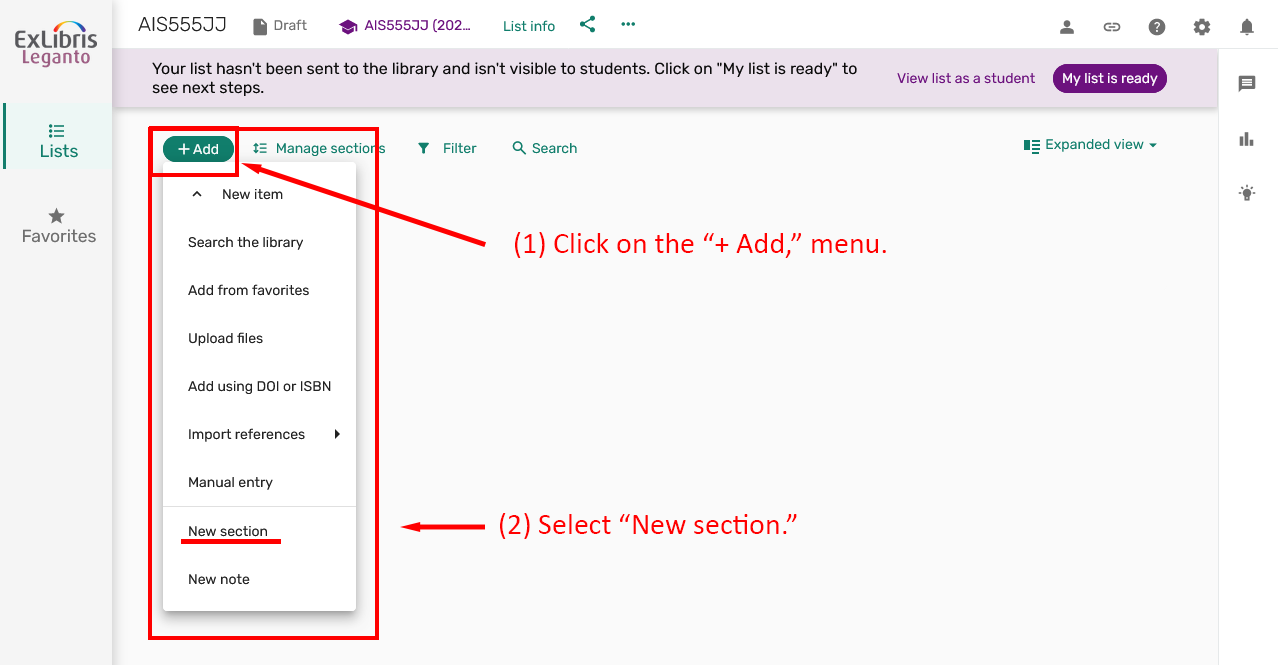
- Add a title to your new section.
- Add a description to your new section.
- OPTIONAL: Enter dates for publishing.
- Click "Add."
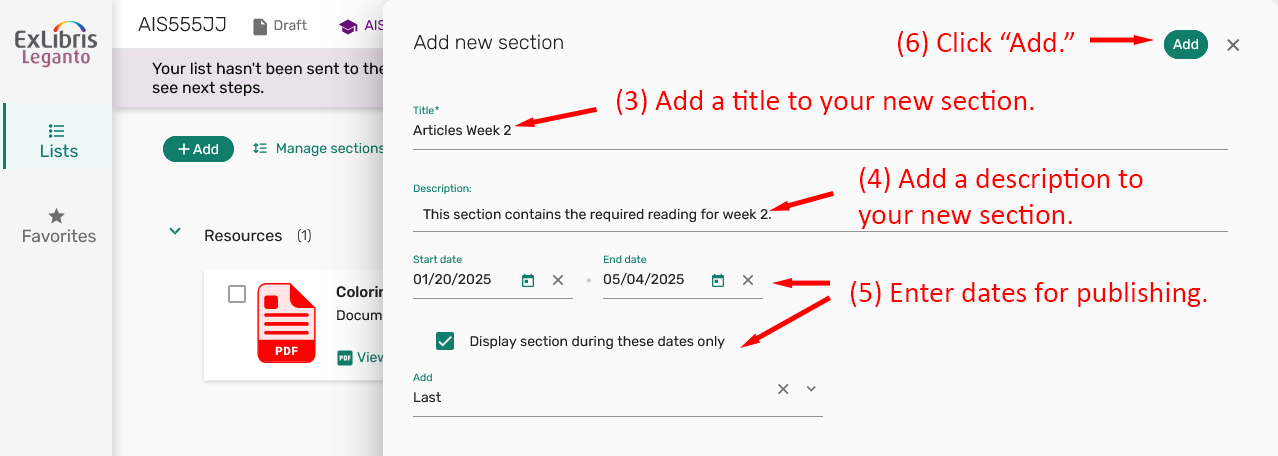
Steps for adding items requested through the Library's course reserves form:
- Locate the resource in your reading list Resources section, hover over the edge of the resource to make the drag option visible.
- Any electronic items requested through our courses reserves form, will be added to your Resources section by library staff.
- Click and hold the 6 dots, then drag the citation to your new section.
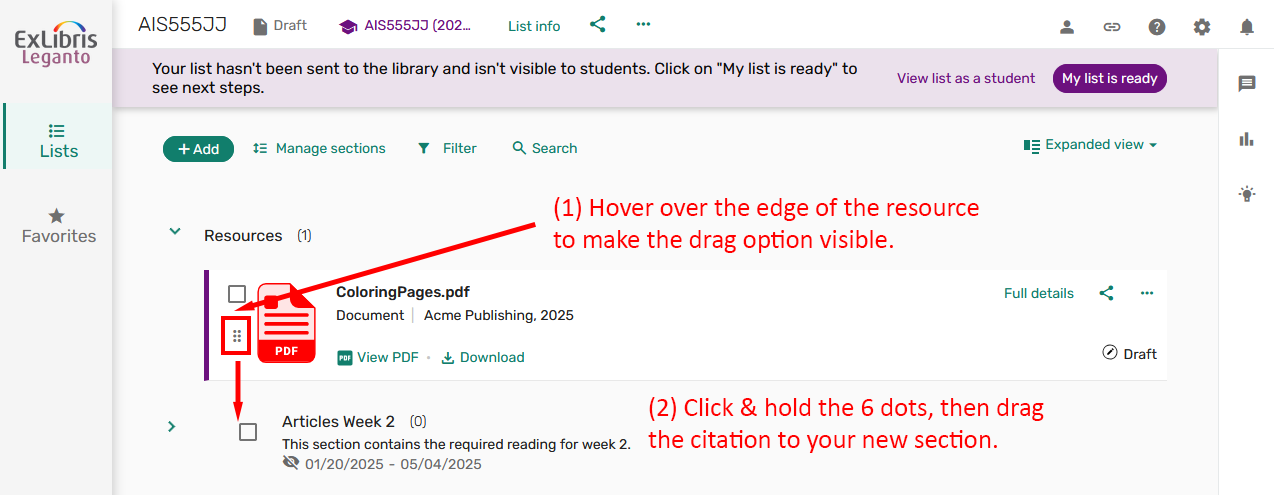
- The resource is now in your new section.
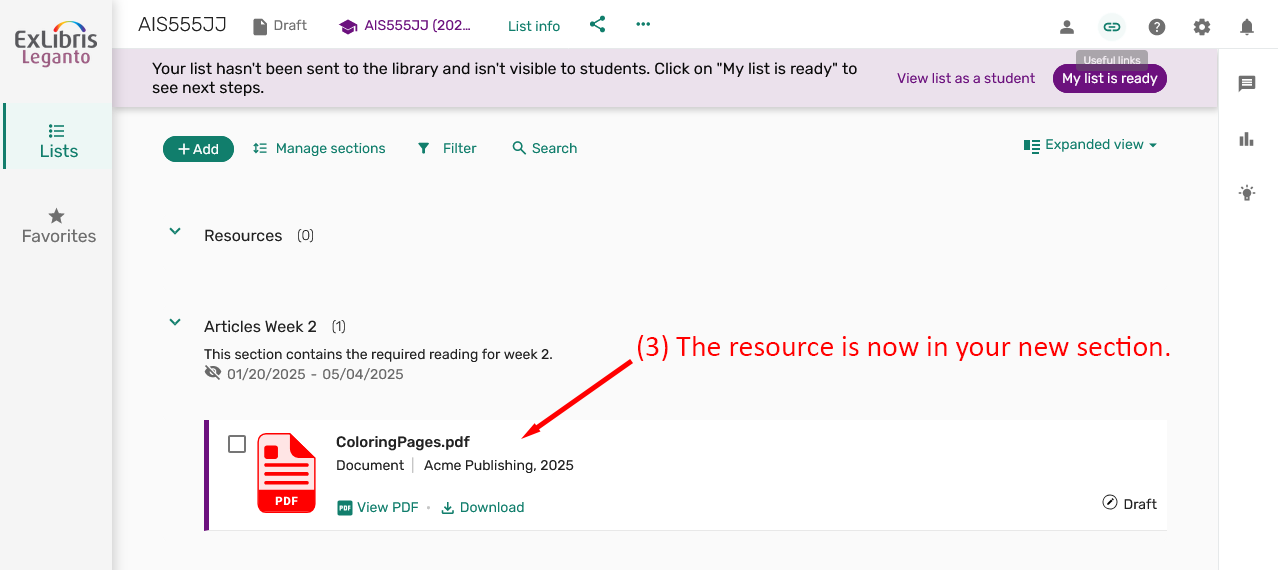
Steps for adding items from the Library Catalog:
- Click on, "+ Add," menu.
- Select "Search the library."
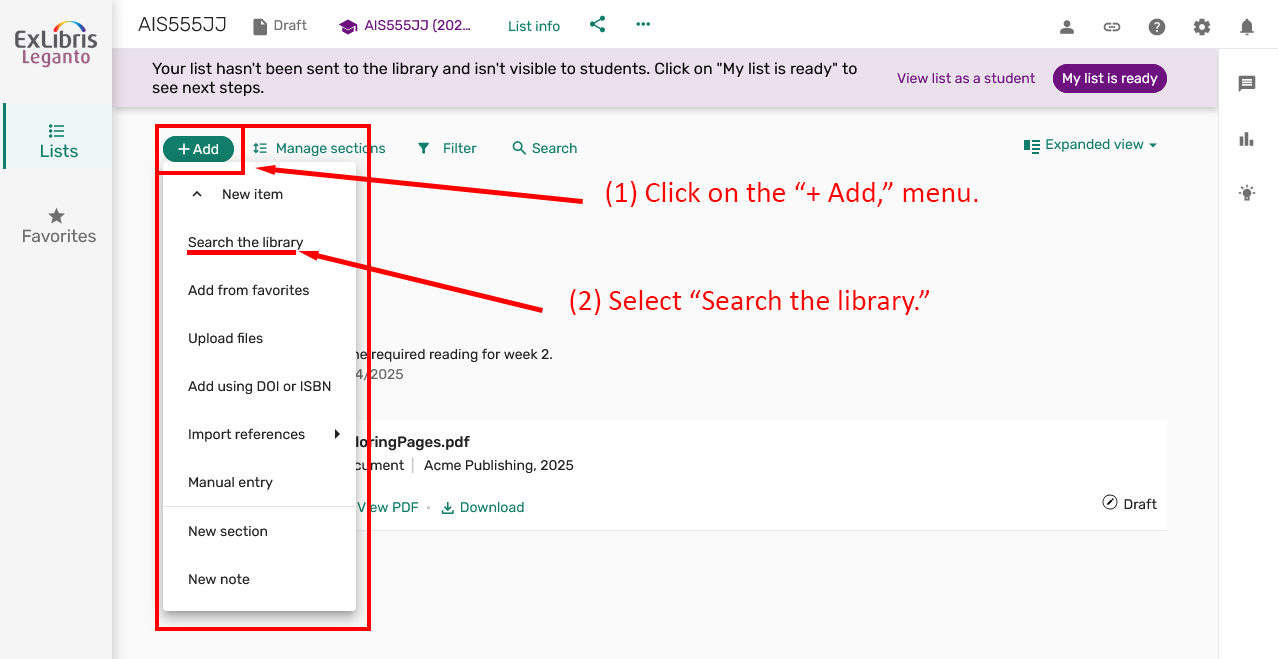
- Enter your search query and press "Enter."
- Drag and drop the resource into your section.
- OPTIONAL: Click on the "+" symbol to enable more detailed resource options.
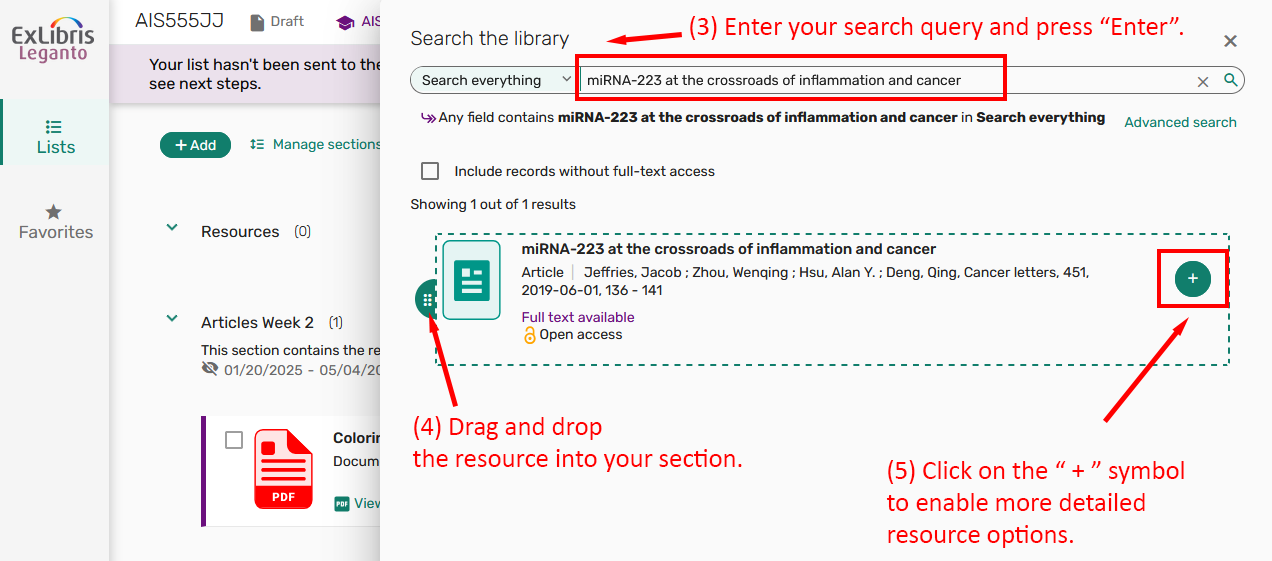
- OPTIONAL: If you clicked on the "+" symbol to enable more detailed resource options: Select your reading list section.
- Click "Add," to add the resource to your reading list.
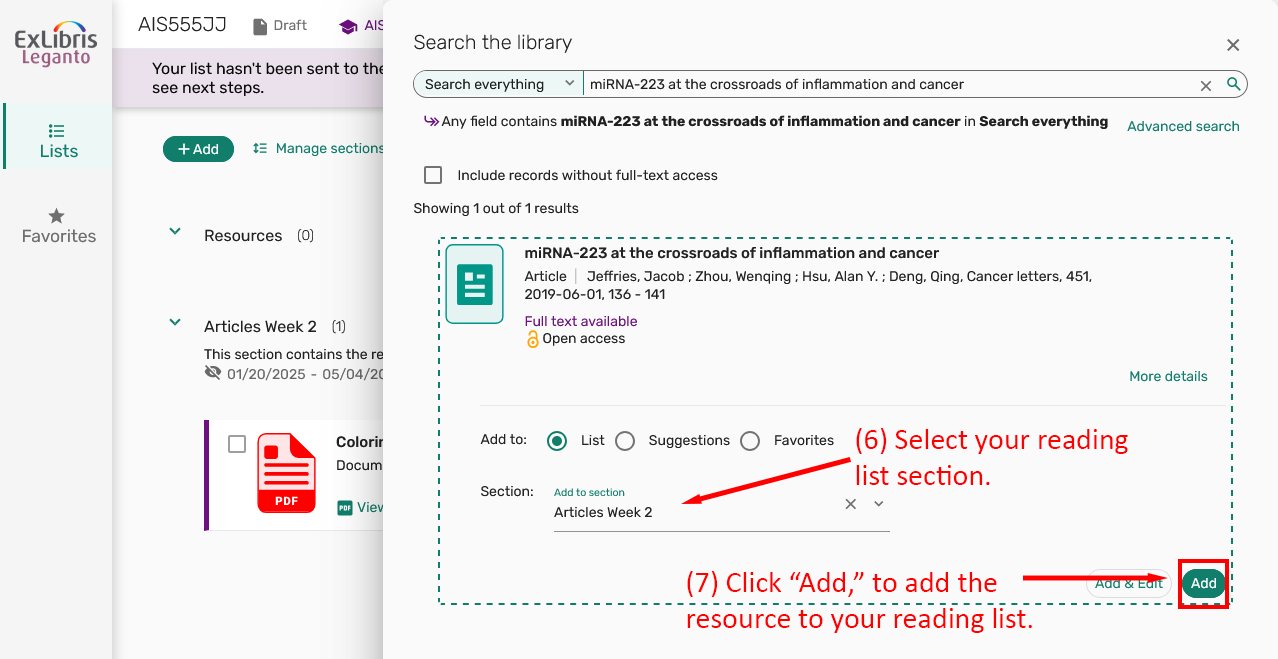
Adding Streaming Resources to Your Reading List:
- Similar to the steps above: click on the "+ Add" menu and select "Search the library," then enter the title of the streaming resource into the search query and press "Enter."
- You can add the selected resource to your reading list as shown above by either dragging and dropping, or by selecting the detailed options and picking a specific section.
- Click "Add," to add the resource to our reading list.

Generating Your Own Materials
For instructions on adding your own materials to your reading list, please contact the Center for Teaching and Learning.
Steps:
- Click, on the "My list is ready," button to start the publishing process.
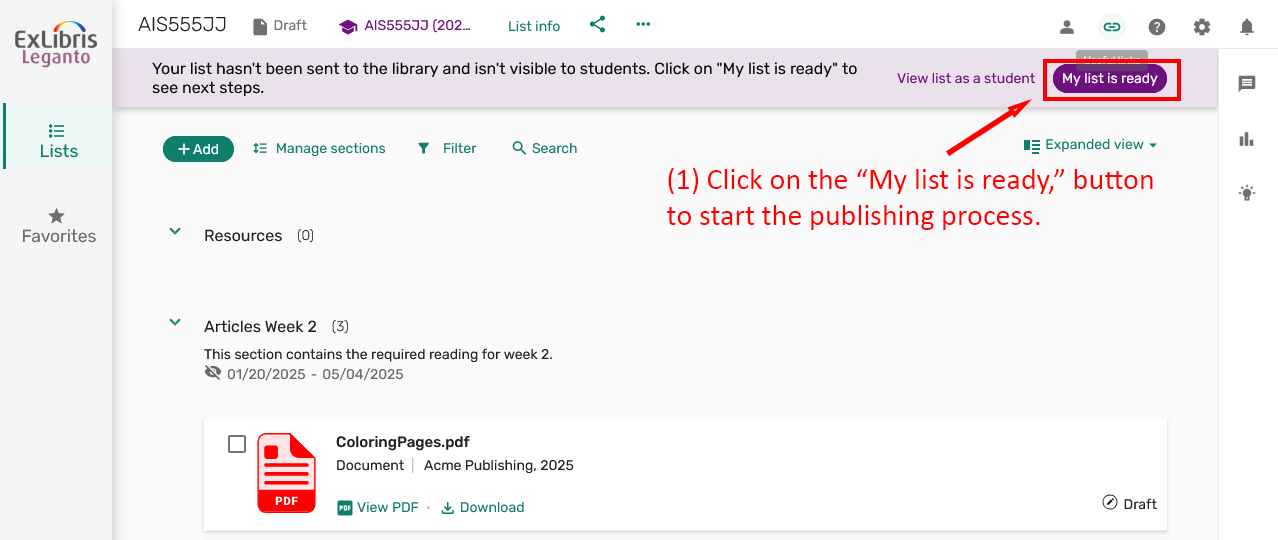
- Select the "Also publish the list to students," checkbox.
- Select the "Course students," radio button.
- Click the "Send," button to finish the publication process.
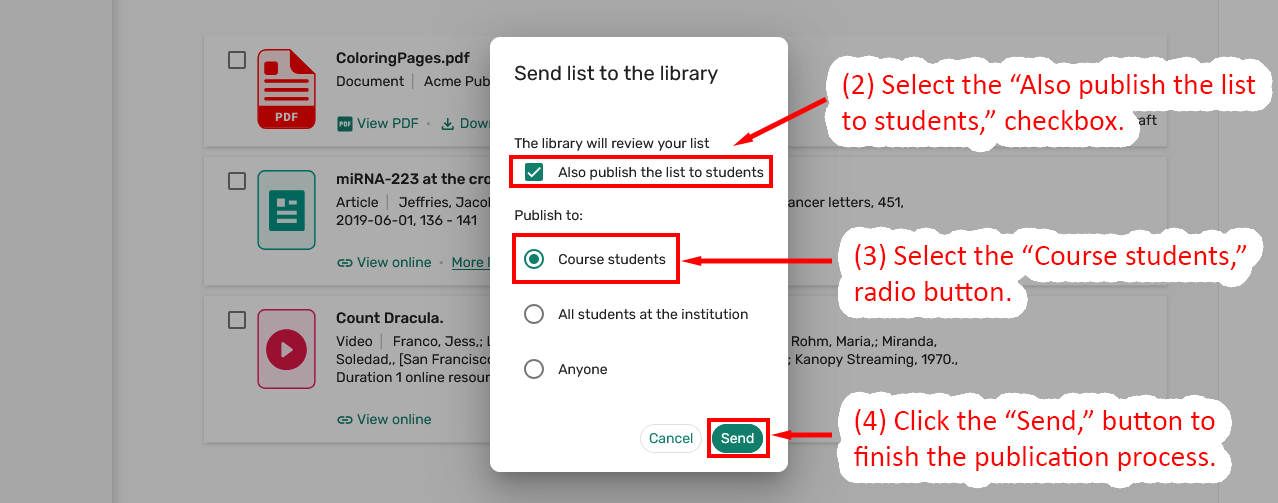
Congratulations!
- Your reading list is now published for students to access.

Finalize edits in EduCat
- Turn off edit mode for your course in EduCat.


